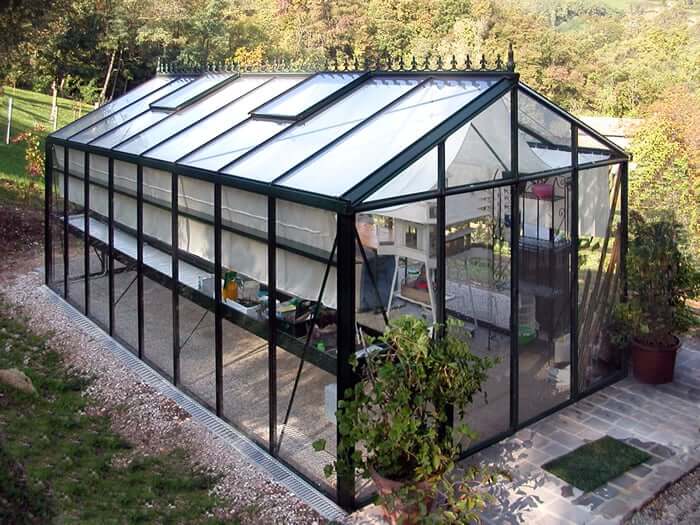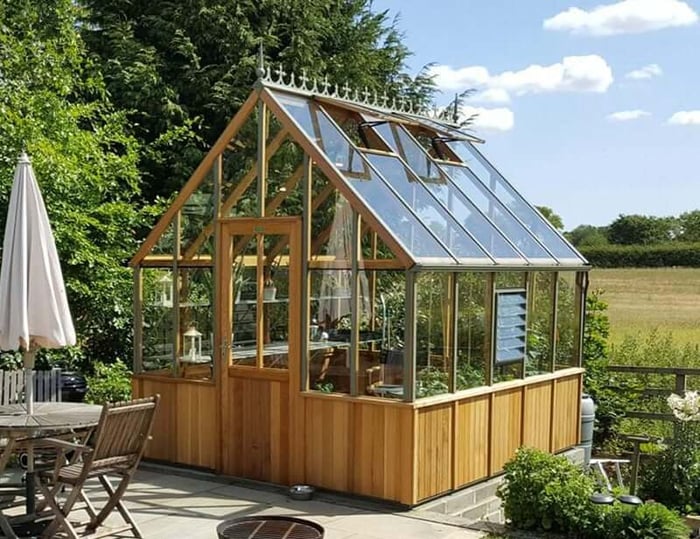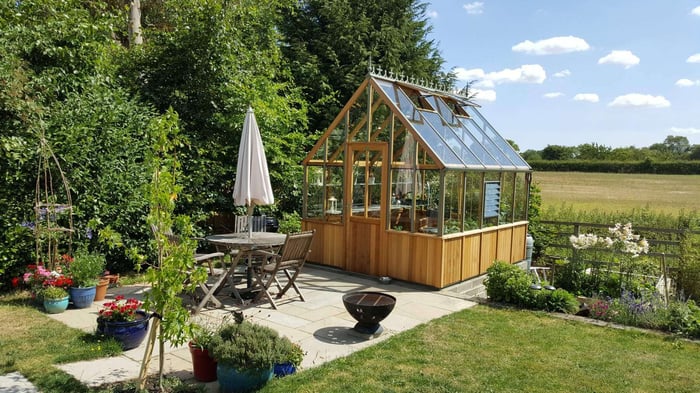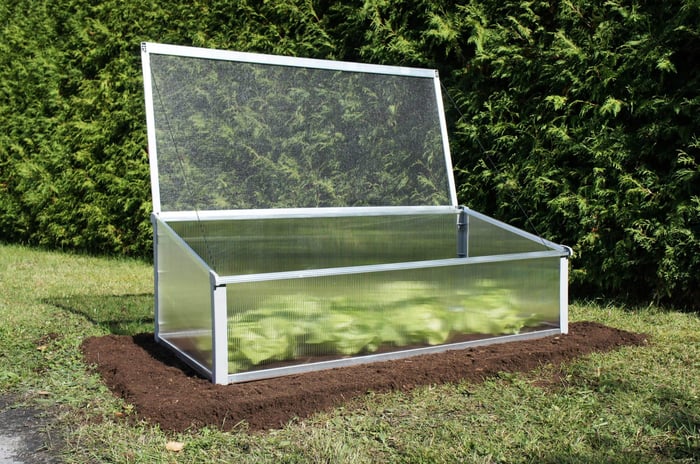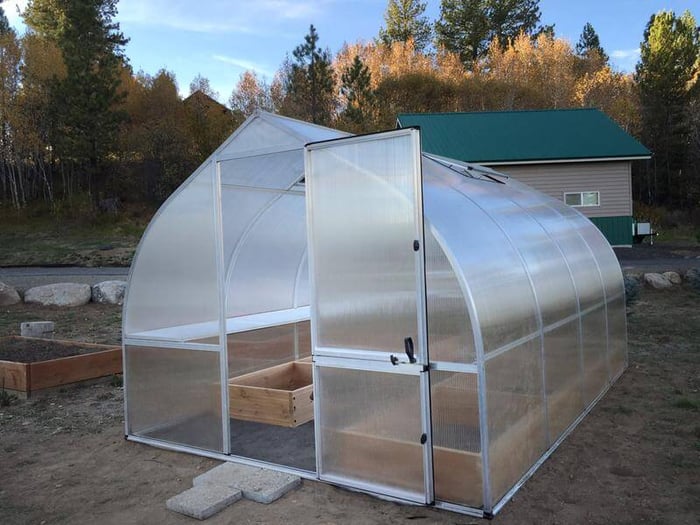Table of Contents
- The Evolution of Greenhouse Materials
- Glass Glazing: Time-Tested Performance
- Polycarbonate for Greenhouses: Engineering Excellence
- Plastic Film: The Problematic Budget Option
- Quality Standards and Selection Criteria
- Professional Selection Guidelines
- Cedar and Glass by Alton
- Investment Analysis and Total Cost Considerations
- Industry Recommendations by Application
- Conclusion: Strategic Material Selection
- FAQs
Selecting the Right Greenhouse Glazing: A Complete Analysis of Polycarbonate, Glass, and Plastic Materials
Choosing appropriate glazing material ranks among the most critical decisions when planning a greenhouse project. The type of glazing - plastic, glass, or polycarbonate for greenhouses directly influences growing conditions, operational expenses, structural longevity, and overall cultivation success. Many novice builders focus primarily on initial costs, leading to expensive mistakes that become apparent within the first few growing seasons.
The covering material serves as your greenhouse's protective barrier against weather while allowing essential sunlight to reach your plants. Understanding the fundamental differences between available options—specifically polycarbonate for greenhouses, glass panes, and plastic sheeting—enables informed decision-making that supports long-term gardening objectives.
The Evolution of Greenhouse Materials
Modern greenhouse construction offers significantly more sophisticated options than previous generations of growers enjoyed. While traditional glass remains relevant, engineered materials now provide compelling alternatives that often surpass conventional solutions in key performance areas. However, material quality varies dramatically across price points, making educated selection crucial for project success.
Janssen Lean To Greenhouse Modern

$17,249.00
Meet The Modern Lean to Greenhouse that Breaks the Mold Offered by South Table Sheds Free Shipping (Continental US) Authorized Dealer A Fresh Take on Classic Lean to Greenhouse Modern Style Picture your backyard crowned by sleek, clean lines. This Lean to… read more
Glass Glazing: Time-Tested Performance
Glass has maintained its position as a premium greenhouse covering material for over a century, earning this reputation through consistent performance and distinctive characteristics that benefit serious cultivation efforts.
Glass Advantages:
- Maximum light transmission: Premium glass allows 90-95% of available sunlight to penetrate, ensuring optimal photosynthesis conditions
- Extended service life: Properly installed glass systems routinely provide 30-50 years of reliable performance without significant degradation
- Maintenance simplicity: Smooth surfaces clean easily and retain optical clarity throughout their operational lifespan
- Professional appearance: Creates an elegant, traditional greenhouse aesthetic that enhances property value
- Chemical compatibility: Resists damage from fertilizers, pesticides, and cleaning compounds commonly used in greenhouse environments
Glass Limitations:
- Safety considerations: Standard glass creates hazardous sharp fragments when broken, though tempered options address this concern
- Thermal inefficiency: Single-pane installations provide minimal insulation, resulting in elevated heating expenses during cold periods
- Structural requirements: Heavy weight necessitates robust framing systems, increasing construction costs
- Installation complexity: Requires specialized knowledge and tools for proper mounting and sealing
- Higher investment: Quality tempered glass represents a substantial upfront financial commitment
Professional contractors frequently report excellent long-term satisfaction with glass installations, particularly when using tempered panels that eliminate breakage safety concerns. While energy costs tend to run higher compared to insulated alternatives, the durability and consistent performance justify the investment for many applications.
Exaco RIGA Large Polycarbonate Greenhouse
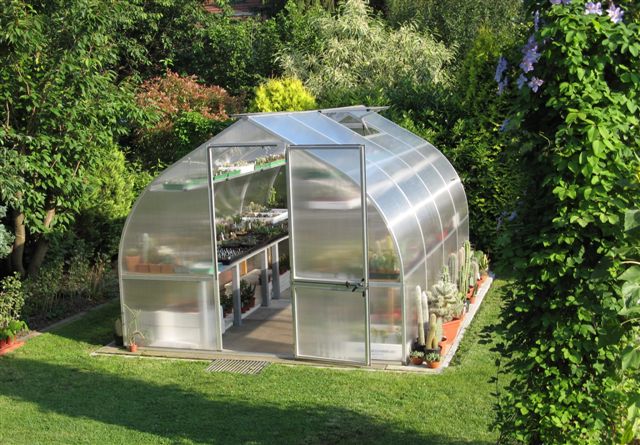
$6,899.00
Best Large Polycarbonate Greenhouse for Cold Climates Sold by South Table Sheds Free Shipping (lower 48 states) No tax Authorized Retailer The RIGA Large Polycarbonate Greenhouse is more than a structure. It’s a sanctuary for gardeners who refuse to be… read more
Polycarbonate for Greenhouses: Engineering Excellence
Polycarbonate represents a modern material, engineered and applied to cultivation environments. This synthetic material combines multiple beneficial properties that address many limitations found in traditional alternatives, making polycarbonate for greenhouses increasingly popular among both hobbyists and commercial operators.
Polycarbonate Benefits:
- Excellent thermal performance: Multi-wall designs create insulating air spaces, reducing heating costs by 30-50% compared to single-pane glass
- Outstanding durability: Virtually shatterproof construction withstands severe weather conditions including hail, high winds, and temperature extremes
- Enhanced light distribution: Built-in diffusion properties eliminate hot spots while ensuring even illumination throughout the growing space
- Reduced weight: Lighter than glass, requiring less expensive structural support systems
- UV filtering: Integrated protection shields plants from harmful ultraviolet radiation while maintaining beneficial light spectrums
- Installation flexibility: Compatible with standard tools and techniques, making DIY installation feasible
Polycarbonate Considerations:
- Gradual aging: Extended exposure eventually causes some yellowing or cloudiness, gradually reducing light transmission
- Surface sensitivity: More susceptible to scratching than glass, requiring careful handling during installation and maintenance
- Finite lifespan: Quality panels typically provide 10-20 years of optimal performance before replacement becomes advisable
- Thermal movement: Requires proper mounting techniques that accommodate expansion and contraction cycles
Critical Quality Factors: The polycarbonate for greenhouses market includes products of vastly different quality levels. Premium polycarbonate for greenhouses incorporate UV stabilizers and impact modifiers that dramatically extend service life. Conversely, cheap imported materials often fail within 18-24 months, exhibiting rapid yellowing, brittleness, and structural degradation. When selecting polycarbonate for greenhouses, reputable manufacturers like Palram, Solexx, Riga, and Janssen produce panels that consistently deliver reliable long-term performance.
Plastic Film: The Problematic Budget Option
Polyethylene film represents the lowest-cost greenhouse covering option, making it attractive to cost-conscious builders. However, extensive field experience demonstrates that this apparent savings typically becomes an expensive mistake over operational timeframes.
Limited Film Advantages:
- Minimal initial investment: Represents the cheapest immediate covering solution
- Simple installation: Basic tools and techniques suffice for application
- Experimental applications: Suitable for temporary structures or seasonal testing
Significant Film Disadvantages:
- Brief service life: Most films require replacement every 1-3 years under normal conditions
- Mechanical fragility: Tears easily from wind stress, hail impact, or routine handling
- Temperature sensitivity: Becomes brittle in cold weather while sagging excessively in heat
- UV degradation: Solar exposure rapidly reduces both transparency and structural integrity
- Hidden costs: Frequent replacement creates higher long-term expenses than quality alternatives
Construction professionals consistently observe that greenhouse owners using plastic films spend more on replacements over five-year periods than initial investments in quality polycarbonate would have cost. Beyond financial considerations, repeated covering failures disrupt growing schedules and damage sensitive crops during critical development stages.
Quality Standards and Selection Criteria
Successful greenhouse projects demand premium materials from established manufacturers. Too many promising builds fail due to substandard components that seemed economical initially but proved inadequate under real-world conditions.
Quality Indicators:
- UV stabilization: Premium materials include additives that significantly extend operational lifespans
- Appropriate thickness: Twin-wall polycarbonate for greenhouses should measure at least 6mm for adequate durability and insulation
- Manufacturer reputation: Established companies like Palram, Solexx, Riga, and Janssen stand behind their products with comprehensive warranties
- Technical specifications: Quality suppliers provide detailed performance data and installation guidelines
- Industry certifications: Look for products meeting relevant building codes and industry standards
Warning Signs:
- Suspicious pricing: Dramatically low prices typically indicate compromised materials or manufacturing shortcuts
- Vague specifications: Reputable manufacturers clearly define material properties and performance characteristics
- Limited warranties: Quality companies offer substantial coverage reflecting confidence in their products
- Unknown origins: Avoid products lacking clear manufacturer identification or technical support
Professional Selection Guidelines
Industry experience across diverse climates and applications has established clear criteria for matching glazing materials to specific requirements:
Glass Applications:
- Permanent installations where longevity justifies higher costs
- Situations prioritizing maximum light transmission and traditional aesthetics
- Moderate climates with minimal extreme weather exposure
- Projects with professional installation capabilities and adequate budgets
Quality Polycarbonate Applications:
- Installations seeking optimal performance-to-cost ratios
- Locations experiencing severe weather conditions
- Projects prioritizing energy efficiency and thermal performance
- DIY installations requiring manageable materials and techniques
- Commercial operations needing reliable, cost-effective solutions
When considering polycarbonate for greenhouses, these applications demonstrate where this material excels over alternatives.
Plastic Film Limitations:
- Temporary or experimental structures only
- Situations with absolute budget constraints requiring minimum initial investment
- Applications where frequent replacement is acceptable
Investment Analysis and Total Cost Considerations
Professional greenhouse planning requires evaluating total ownership costs rather than focusing solely on initial expenses. Comprehensive analysis over typical 15-20 year operational periods reveals significant differences between apparent bargains and genuine value.
15-Year Cost Analysis:
- Quality polycarbonate for greenhouses: Initial investment plus potential single replacement equals excellent overall value
- Premium Glass: Higher upfront cost with minimal replacement needs provides premium long-term economics
- Cheap Plastic: Low initial cost plus 7-15 replacements often creates the highest total expense
This analysis excludes costs associated with crop losses, heating inefficiencies, and labor time for repeated installations—factors that further favor quality materials.
Industry Recommendations by Application
Current best practices based on extensive professional experience suggest these material selections:
Home Greenhouse Builders: Twin-wall polycarbonate for greenhouses from reputable manufacturers including Palram, Solexx, Riga, or Janssen provide optimal balance of performance, durability, and value. The 8-10mm thickness delivers excellent insulation while maintaining good light transmission for most growing applications.
Premium Residential Projects: Tempered glass remains the ultimate choice for builders prioritizing maximum longevity, light transmission, and classic greenhouse aesthetics, despite higher initial investment requirements.
Commercial Operations: Multi-wall polycarbonate for greenhouses (triple-wall or structured panels) offer superior insulation properties, weather resistance, and cost-effectiveness essential for profitable commercial growing operations.
Specialty Applications: Unique requirements may benefit from hybrid approaches, such as glass south-facing walls for maximum winter light combined with polycarbonate for greenhouses elsewhere for improved insulation.
Conclusion: Strategic Material Selection
Professional greenhouse construction consistently demonstrates that covering material represents a critical long-term investment rather than a simple upfront expense. Choosing quality materials from established manufacturers—whether glass or polycarbonate—provides the foundation for decades of successful growing.
The glazing decision made today influences every aspect of greenhouse performance for the next two decades. Premium materials support ambitious growing goals while inferior alternatives create ongoing limitations and expenses. In greenhouse construction, quality materials prove their worth through consistent performance, energy efficiency, and reduced maintenance requirements.
Smart builders recognize that cutting corners on covering materials creates false economies that ultimately cost more through premature failures, energy waste, and crop losses. Whether choosing polycarbonate for greenhouses or premium glass, invest in quality glazing from reputable manufacturers like Palram, Solexx, Riga, and Janssen to ensure your greenhouse project delivers the performance and satisfaction your growing ambitions deserve.
FAQs
1. What are the total costs of different greenhouse glazing materials over 15 years?
When calculating total cost of ownership over 15 years, quality polycarbonate for greenhouses typically offers the best value with initial investment plus potentially one replacement. Premium glass has higher upfront costs but minimal replacement needs, making it the premium long-term option. Cheap plastic film, despite low initial cost, often becomes the most expensive option requiring 7-15 replacements plus associated labor costs, crop disruptions, and energy inefficiencies.
2. What is the main difference between polycarbonate and glass for greenhouses?
The primary differences lie in insulation, durability, and cost. Polycarbonate for greenhouses offers superior thermal insulation with multi-wall designs that can reduce heating costs by 30-50% compared to single-pane glass. Glass provides maximum light transmission (90-95%) and longer lifespan (30-50 years), but requires higher upfront investment and offers minimal insulation. Polycarbonate is virtually shatterproof and lighter weight, while glass provides the classic aesthetic and easiest maintenance.
3. How long does polycarbonate greenhouse glazing typically last?
Quality polycarbonate for greenhouses from reputable manufacturers like Palram, Solexx, Riga, and Janssen typically provides 10-20 years of optimal performance when properly installed. However, cheap imported polycarbonate often fails within 18-24 months due to rapid yellowing, brittleness, and UV degradation. The lifespan depends heavily on UV stabilization and material quality, which is why investing in premium panels is crucial.
4. Why should I avoid plastic film for my greenhouse covering?
Plastic film represents a false economy despite its low initial cost. Most films require replacement every 1-3 years, tear easily from wind or hail, become brittle in cold weather, and degrade rapidly under UV exposure. Over a five-year period, greenhouse owners typically spend more on plastic film replacements than they would have on quality polycarbonate panels initially. Additionally, film failures often disrupt growing schedules and damage crops during critical development stages.
5. What thickness of polycarbonate should I choose for my greenhouse?
For most residential greenhouse applications, twin-wall polycarbonate for greenhouses should measure at least 6mm thick for adequate durability and insulation. The 8-10mm thickness provides optimal balance of performance, durability, and value for home greenhouse builders. Commercial operations often benefit from triple-wall or structured panels for maximum insulation and weather resistance.
6. What are the key considerations when choosing glass for greenhouse construction?
When selecting glass for greenhouse applications, safety should be the top priority. Always choose tempered glass over standard glass to eliminate dangerous sharp fragments if breakage occurs. Tempered glass costs more initially but provides essential safety protection. Glass offers unmatched benefits including maximum light transmission (90-95%), 30-50 year lifespan with minimal degradation, easy cleaning and maintenance, and a classic professional appearance that enhances property value. Glass is ideal for permanent installations in moderate climates where aesthetics and maximum light transmission are priorities over energy efficiency.

